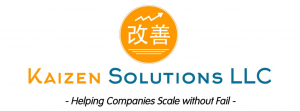The EOS Model® provides a useful foundation for businesses, but it falls short in addressing key aspects of creating an growth. By incorporating additional elements from the Gravitas 7 Attributes of Agile Growth® model, businesses can create a more comprehensive system that promotes growth while maintaining smooth operations. Focusing on Leadership, Strategy, Execution, Customer, Profit, Systems, and Talent, the 7 Attributes of Agile Growth® offer a more encompassing approach to achieving success.

Profit ≠ Cash Flow
While I have known this for a long time, last week, it was brought home to me how many conflate the two. Profit and Cash Flow are not the same. I have known many profitable companies have negative cash flow and some unprofitable ones have positive cash flow. Knowing the difference is critical.
As I have mentioned before, cash is the blood in a company. Without it, the company dies, regardless of how profitable it is. Many young companies that take off don’t appreciate the issue and believe that they will solve it with growth. However, this is similar to the old business joke, “Of selling at a loss but making it up on volume.”
How the Statements Connect
For non-accountants and finance people, the issue is that they look at the Profit and Loss Statement, Balance Sheet, and Statement of Cash Flows as separate entities without realizing the interconnectedness. Finally, the way a standard statement of cash flows is laid out, most don’t know what it is saying.
It takes a while to realize that the P&L shows you the earning for the period, then the statement of cash flows shows the adjustments required to get to the cash generated from the different sources. Finally, the balance sheet is the statement at the end of the period of what is owned and what is owed. They flow in that order, generating the statement of cash flows from the profit and loss statement, and the balance sheet really cemented the relationships in my mind.
The Dates
Again, I was made aware of this when I was presented with a profit and loss statement and balance sheets, but all as of different dates. If the dates don’t sync, you can’t deduce much from them. The profit and loss statement must cover the same periods. The balance sheets must be as of the starting date and the ending date of the period. Sounds simple, but many look at these financial statements for different periods and don’t realize that you can’t tell much from them.
How to Determine Your Cash Flow
Now many people don’t understand the statement of cash flows, and I understand that. The key information is how much cash the firm generates or absorbs, what it will do with it, or how it funds the shortfall. For many entrepreneurs, here is an easy way of looking at Cash Flow. Assume your company has a Gross Margin and Net Operating Margin of 20% and a 10.15%, respectively. In addition, your Accounts Receivable, Inventory, and Accounts Payable are 80, 35.7, and 45 days respectively. If you grow revenue by $100, the effect is as follows.
| Revenue | + | $100.00 |
| Cost of Goods Sold | – | 80.00 |
| Gross Profit | = | 20.00 |
| SG&A (Overheads) | – | 9.85 |
| Net Operating Profit | = | 10.15 |
| Accounts Receivable (80 days) | – | 21.92 |
| Inventory (35.7 days) | – | 9.78 |
| Accounts Payable (45 days) | + | 12.33 |
| Cash Shortfall | = | $9.22 |
Thus for every additional $100 of revenue, you need $9.22 of extra cash. This is why many fast-growing companies implode, they cannot get sufficient cash to fund their growth, and without cash, the company dies. Now some will argue that I have not added back depreciation etc. That is true; however, I have found that CapEx is equal to depreciation over time if you wish your company to keep functioning, so that is just a timing issue.
How to Improve Cash Flow?
So understanding your cash flow is a vital part of understanding the financial model of your business. If you generate a shortfall, you need to figure out how you will finance it. There are really three options,
- Arrange to finance for your working capital.
- Shorten your Cash Conversion Cycle
- Use the Power of One to change the cash generation of the business.
There are a number of companies that provide working capital financing, so if you need some names, let me know. If you don’t know your cash flow cycle, it is the time from when you start the sales cycle until you get paid. It is broken into four areas – Sales Cycle, Make/Production & Inventory Cycle, Delivery Cycle, and Billing and Payments Cycle. The Power of One, developed by Alan Mills, determines which of seven variables most influences increased cash flow.
I know many companies don’t have this information, and their accounting systems don’t know how to produce it. In that case, get a coach or adviser who can help you. The investment will be well worth the effort to understand how to drive your business without ongoing funding. If you want more information on how these work and how to implement them in your business, message me.
Copyright (c) 2021 Marc A. Borrelli
Connect
Ready to get real about growing your business?
Privacy Policy • Copyright (c) Kaizen Solutions LLC












